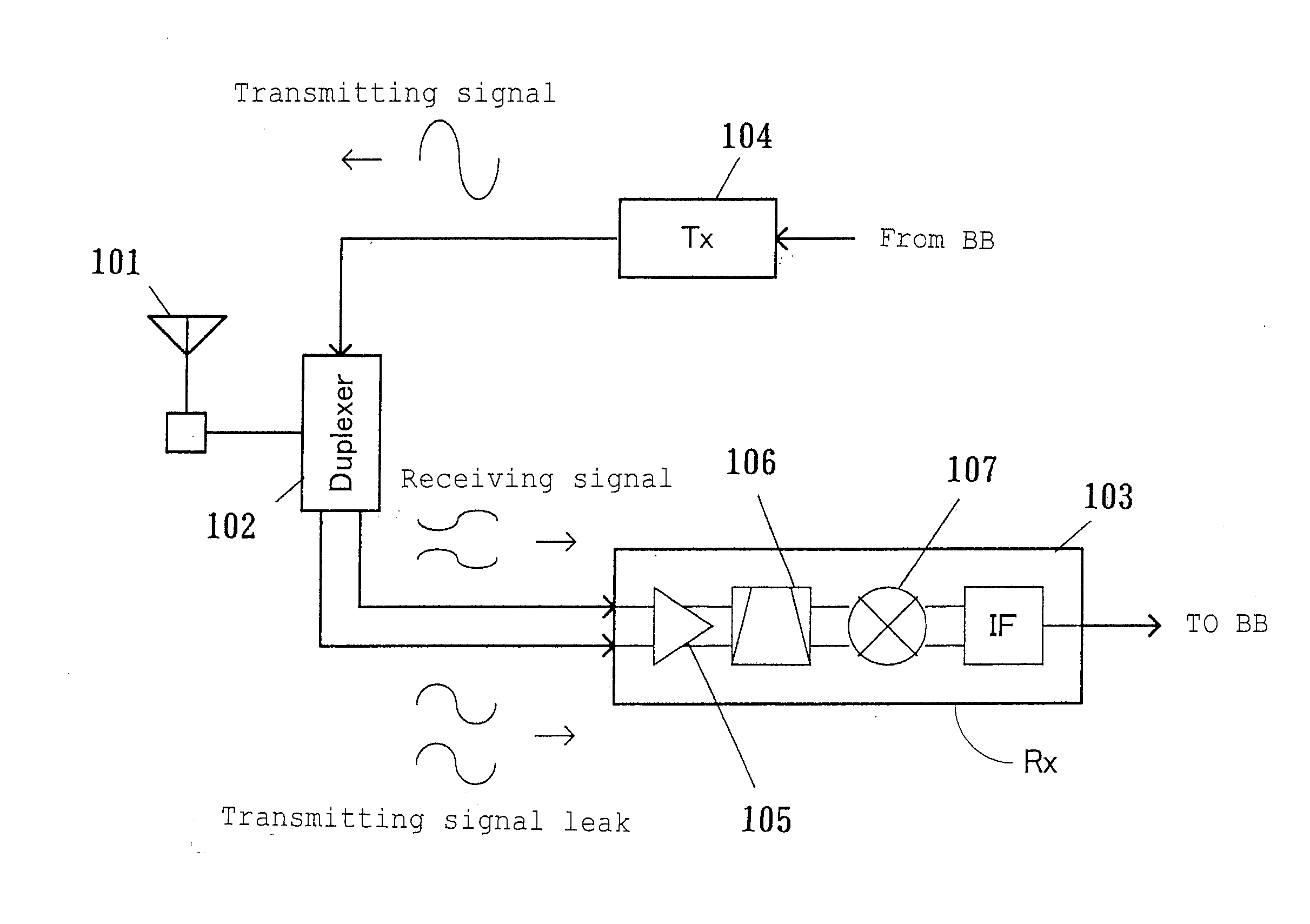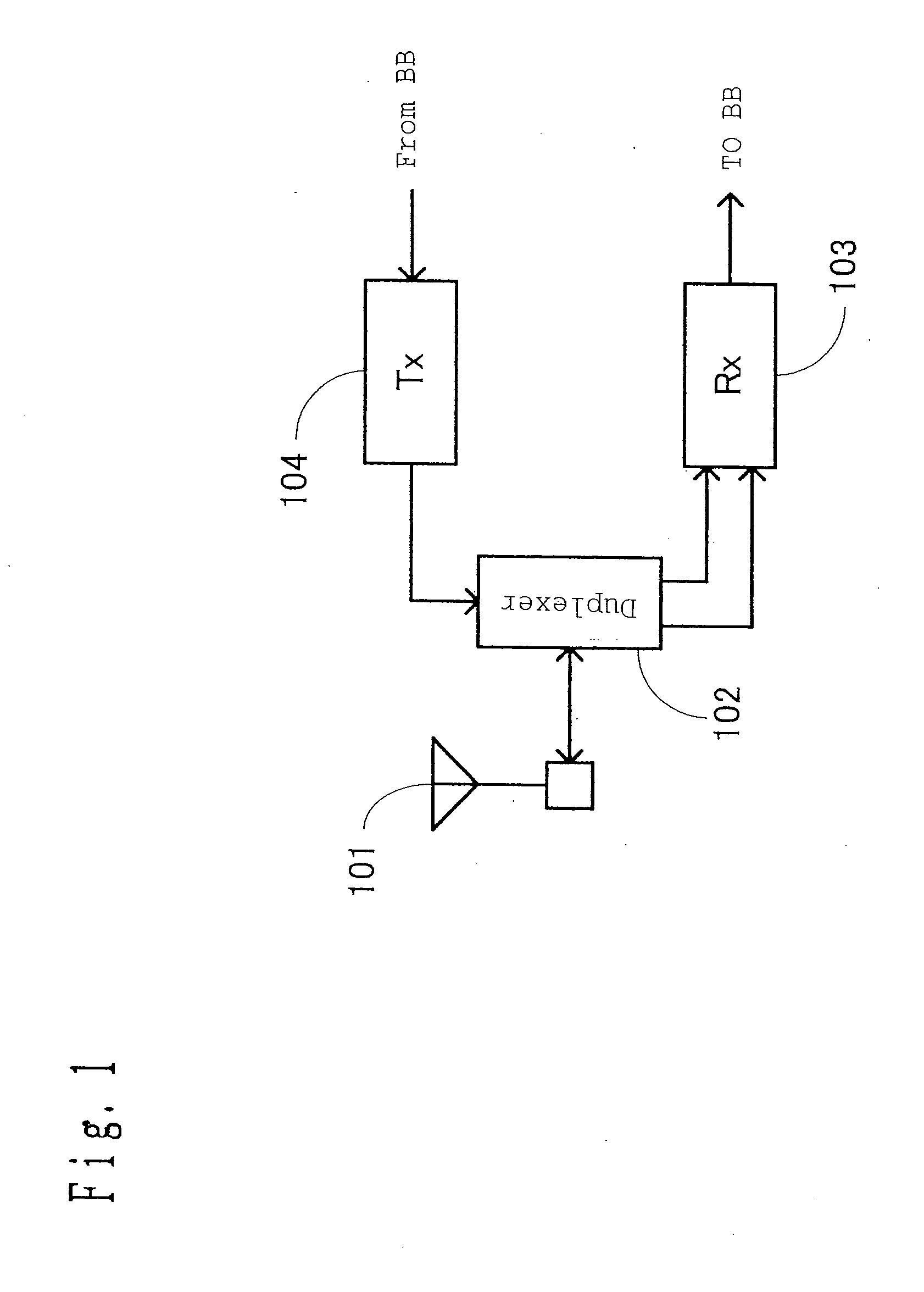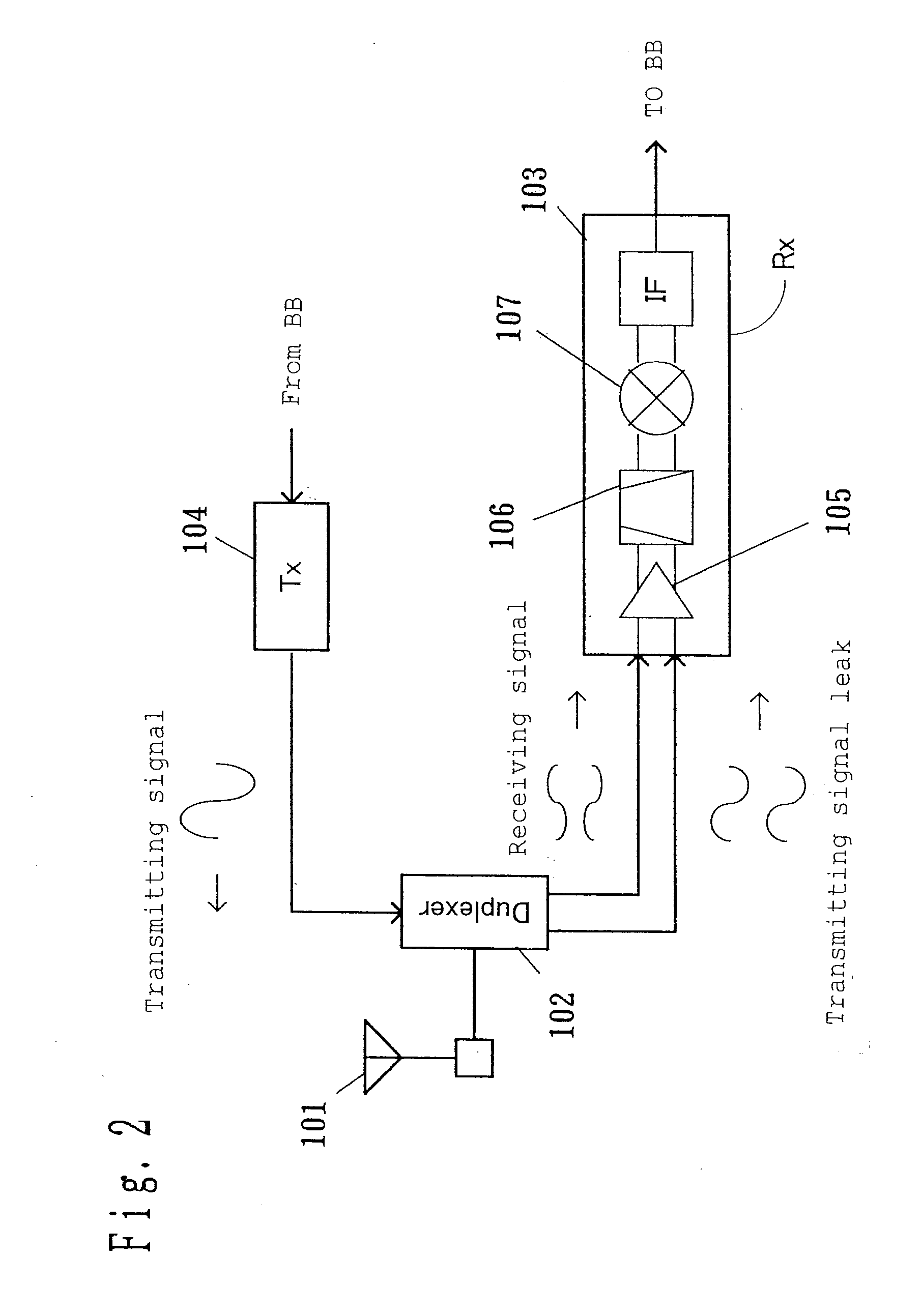Radio communication apparatus, radio communication method, antenna apparatus and first duplexer
a radio communication and antenna technology, applied in the direction of combination control in untuned/frequency-selective amplifier stages, polarised antenna unit combinations, antennas, etc., can solve the problems of low standby time performance, high receiving signal level, and increase in current consumption of control circuits for switching modes. , to achieve the effect of reducing the deterioration of the transmitting signal on simultaneous transmission and reception, and reducing the deterioration of the reception
- Summary
- Abstract
- Description
- Claims
- Application Information
AI Technical Summary
Benefits of technology
Problems solved by technology
Method used
Image
Examples
first embodiment
[0164]FIG. 1 is a circuit diagram of a radio communication apparatus related to a first embodiment of the present invention. In this diagram, reference numeral 101 denotes a single-phase input-output antenna corresponding to an antenna of the present invention as an example, 102 denotes a duplexer (antenna sharing apparatus) of which transmission input terminal is a single-phase input type, antenna input-output terminal is a single-phase input-output type, and receiving output terminal is a balanced output type as an example of a duplexer of the present invention, 103 denotes a receiving circuit of differential input as an example of a receiving apparatus of the present invention connected to the balanced output terminal and having a circuit in which a gain of a signal of a differential component is higher than that of a signal of an in-phase component, or a loss of the signal of the differential component is lower than that of the signal of the in-phase component, and 104 denotes a...
second embodiment
[0192]FIG. 11 is a circuit diagram of the radio communication apparatus related to a second embodiment of the present invention. In FIG. 11, the same components as those shown in FIG. 1 are given the same symbols, and a description thereof will be omitted. In FIG. 11, reference numeral 902 denotes a duplexer of which terminals are single-phase input-output, and 905 denotes a phase shifter of single-phase input and balanced output which outputs the signals in the frequency band of the receiving signals as the differential signals and outputs the signals in the frequency band of the transmitting signals as the in-phase signals. Here, the duplexer of the present invention described in the first embodiment is corresponding as an example to the duplexer 902 and the phase shifter 905.
[0193] As for the radio communication apparatus shown in FIG. 11, the radio frequency signal transmitted from the base station is received by the antenna 101 as in FIG. 1 and is then inputted to the receivin...
third embodiment
[0205]FIG. 13 is a circuit diagram of the radio communication apparatus related to a third embodiment of the present invention. In FIG. 13, the same components as those shown in FIG. 1 are given the same symbols, and a description thereof will be omitted. In FIG. 13, antenna 1101+ is an example of one antenna of the present invention having a first feeding point of feeding a receiving signal and also having two or more polarized waves, antenna 1101− is an example of another antenna of the present invention placed along with the one antenna and having a second feeding point of feeding the receiving signal and also having two or more polarized waves, and a duplexer 1102 is an example of a duplexer of the present invention comprising separate terminals, that is, the transmission input terminal is the single-phase input type, the receiving output terminal is the balanced output type, and the antenna input-output terminal is the balanced input-output type.
[0206] As for the radio communi...
PUM
 Login to View More
Login to View More Abstract
Description
Claims
Application Information
 Login to View More
Login to View More - R&D
- Intellectual Property
- Life Sciences
- Materials
- Tech Scout
- Unparalleled Data Quality
- Higher Quality Content
- 60% Fewer Hallucinations
Browse by: Latest US Patents, China's latest patents, Technical Efficacy Thesaurus, Application Domain, Technology Topic, Popular Technical Reports.
© 2025 PatSnap. All rights reserved.Legal|Privacy policy|Modern Slavery Act Transparency Statement|Sitemap|About US| Contact US: help@patsnap.com



